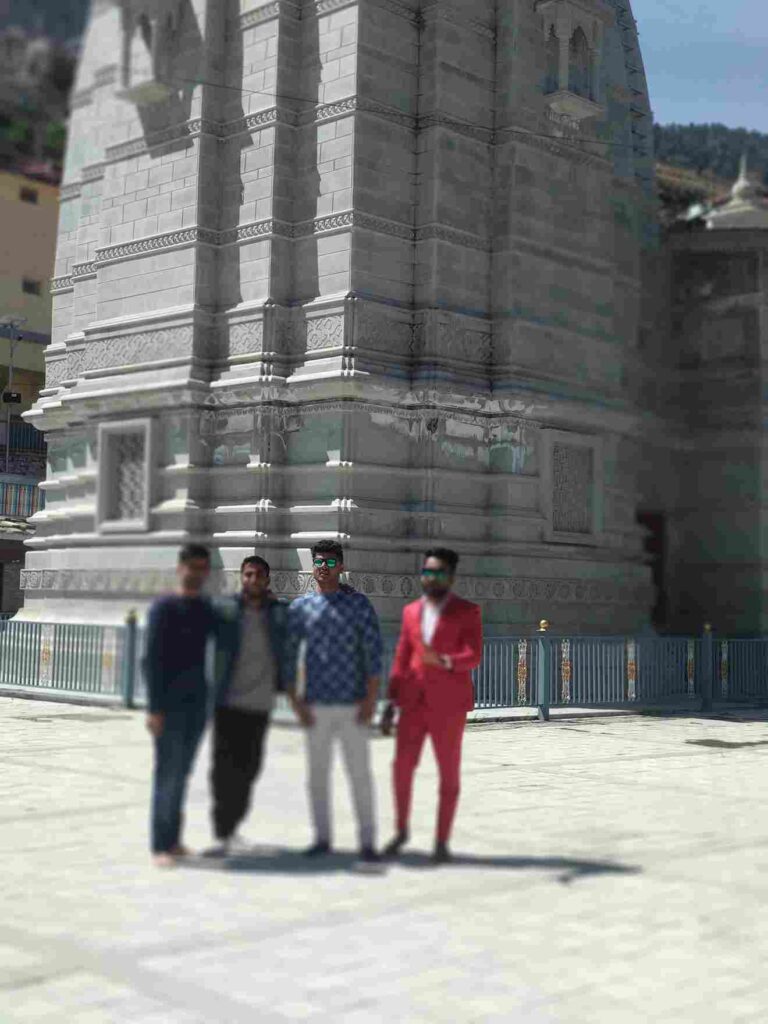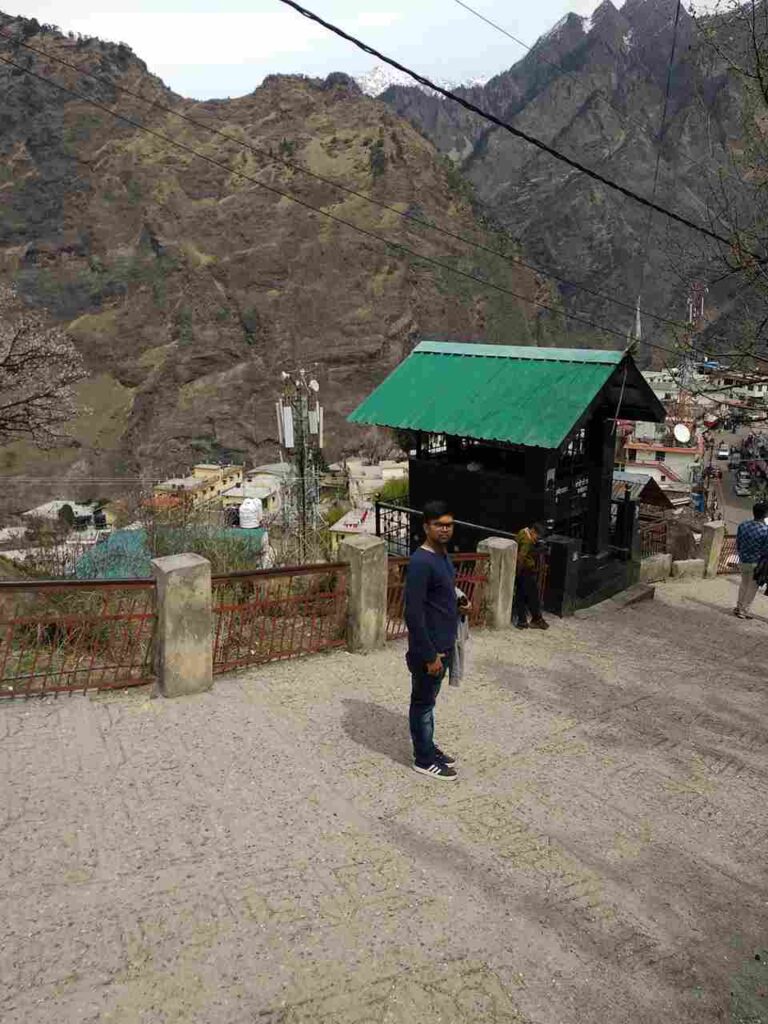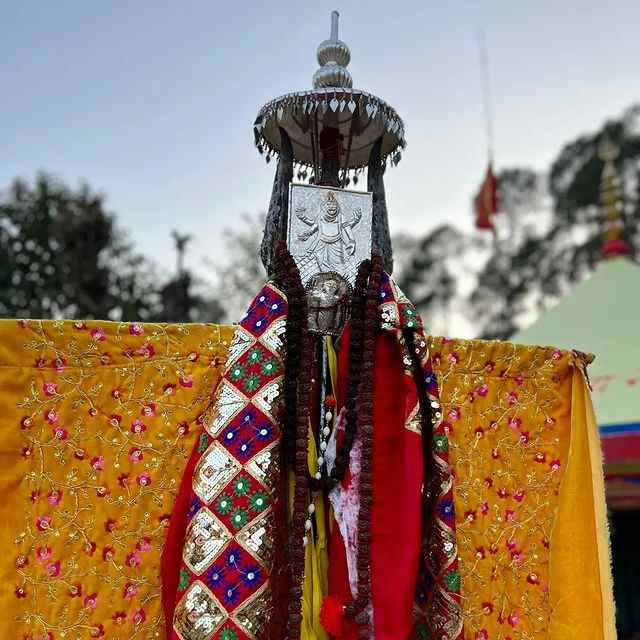Nestled amidst the pristine beauty of the Indian Himalayas lies a mystical deity revered by locals and trekkers alike – Narsingh Devta. This divine entity, also known as the “Lion God,” has a rich history, a unique cult of worshippers, and a mesmerizing natural habitat. In this blog, we will delve into the fascinating world of Narsingh Devta, exploring its history, the methods to reach the sacred shrine, interesting facts, its cultural significance, the right time to visit, and how to prepare for this spiritually enriching journey.
History of Narsingh Devta
Narsingh Devta holds a significant place in the hearts of the people of the Indian state of Uttarakhand, particularly in the Chamoli district.The history of this revered deity traces back to ancient Hindu mythology. Narsingh Devta, in this belief, incarnated as Lord Vishnu in his half-man, half-lion form to protect his devoted Prahlada from the demon king Hiranyakashipu, who was impervious to harm from man or beast.
The legend goes that Narsingh Devta appeared at a moment of extreme peril, tearing apart the demon king and restoring peace.To honor this divine act of protection, the region’s inhabitants built a temple and enshrined Narsingh Devta as the presiding deity. Over time, the deity became the guardian and protector of the Himalayan villages, and his temple became a focal point of spirituality and reverence.
Hindu Mythology and Narsingh Devta:
- The Legend of Prahlada: The primary mythological connection of Narsingh Devta is with the story of Prahlada, a young prince and ardent devotee of Lord Vishnu. Prahlada’s father, Hiranyakashipu, was a demon king who harbored a deep hatred for Lord Vishnu. Despite his father’s opposition, Prahlada continued to worship Lord Vishnu. Hiranyakashipu subjected his son to numerous trials and tribulations, but Prahlada’s devotion remained unwavering.
- The Boon of Immunity: Hiranyakashipu, in his quest for immortality, acquired a boon from Lord Brahma.
According to this boon, Hiranyakashipu grew virtually invincible and nurtured overwhelming arrogance because no man or beast could slay him, whether indoors or outdoors, during daylight or darkness, on the ground or in the sky. - The Divine Incarnation: To honor the conditions of the boon, Lord Vishnu took on a unique and awe-inspiring form – half-man, half-lion – known as Narsingh (Nar meaning man and Singh meaning lion). This avatar allowed Lord Vishnu to fulfill the conditions of the boon and defeat Hiranyakashipu.
- The Twilight Hour:The legend of Narsingh Devta intricately links to the twilight hour, a time neither classified as day nor night. It was during this mystical time that Lord Vishnu, in his Narsingh form, appeared to protect Prahlada. This unique aspect of the story highlights the divine timing associated with Narsingh Devta.
- Symbol of Divine Justice: Narsingh Devta represents the concept of divine justice prevailing over evil. The avatar of Narsingh signifies that no matter how powerful or invincible evil may seem, righteousness and devotion will ultimately triumph.
- Continuing Presence: The Narsingh Devta temple stands as a living testament to this divine intervention, with a belief that Narsingh Devta’s presence continues to provide protection to the region and its inhabitants against calamities and adversities.
Cultural and Spiritual Significance in Hindu Mythology:
- Symbol of Devotion: Narsingh Devta’s story is often cited as a symbol of unwavering devotion. It inspires devotees to remain steadfast in their faith, even in the face of adversity.
- Festivals and Celebrations: The Narsingh Jayanti festival, celebrated with great fervor, commemorates the appearance of Narsingh Devta. During this festival, the deity is adorned with colorful attire and jewelry, and special rituals are performed.
- Divine Protection: People in the region have immense faith in Narsingh Devta’s ability to protect them from natural disasters, particularly landslides and avalanches, which are prevalent in the Himalayan terrain.
- Spiritual Pilgrimage: The trek to the Narsingh Devta temple is not merely a physical journey but also a spiritual one. It is believed that undertaking this pilgrimage can purify the soul and invoke blessings from the divine.
- Cultural Integration: The worship of Narsingh Devta is a beautiful example of how Hinduism seamlessly integrates with local customs and traditions, preserving its ancient roots while adapting to the unique needs of the community.

How to Reach Narsingh Devta
Reaching the abode of Narsingh Devta requires a blend of adventure and devotion.The journey to the Narsingh Devta temple typically commences from Joshimath, which boasts excellent connectivity to major cities such as Haridwar and Dehradun.From Joshimath, trekkers and pilgrims embark on a challenging trek to reach the temple.
The Trekking Route:
The trek to Narsingh Devta is a picturesque yet demanding one. It covers a distance of approximately 10 kilometers from Joshimath to Bhavishya Badri, the starting point of the trek. From Bhavishya Badri, the trail ascends through lush green forests and rugged terrain, offering breathtaking views of the surrounding Himalayan peaks.
Trekkers will pass through charming villages, including Vyas Gufa, where legend has it that the sage Vyas composed the Mahabharata.The final stretch of the trek takes you to Pandukeshwar, the last road-head before the temple. From here, it’s a steep climb to the Narsingh Devta temple, perched at an altitude of around 4000 meters. The trek, though challenging, offers a unique opportunity to connect with nature and experience the spiritual essence of the Himalayas.

Fascinating Facts about Narsingh Devta
- Ceremonial Conch Shell: One of the most intriguing aspects of the Narsingh Devta temple is the presence of a ceremonial conch shell. Indeed, it is believed that the conch shell resonates with the vibrations of Lord Vishnu’s conch, Panchajanya, and is utilized in special rituals.
- Annual Yatra: Every year, a grand yatra (pilgrimage) is organized to the Narsingh Devta temple. Pilgrims from far and wide participate in this sacred journey, seeking the blessings of the Lion God.
- A Living Deity: Narsingh Devta is considered a living deity. The priest who serves at the temple believes that the deity speaks to him and offers guidance. This unique connection between the priest and the deity adds an aura of mysticism to the temple.
Cultural Significance
Narsingh Devta is not only a guardian deity but also an integral part of the local culture and traditions. The temple serves as a center for various rituals and festivals. The most prominent among them is the Narsingh Jayanti festival, which celebrates the deity’s appearance. During this festival, the temple undergoes exquisite decoration, and a grand procession takes place in the nearby villages.
The local community holds immense reverence for Narsingh Devta, seeking his blessings for protection from natural calamities, particularly landslides and avalanches, which are common occurrences in the Himalayan region. The temple also plays a vital role in the socio-religious life of the people, fostering a sense of unity and faith among them.
The Right Time to Visit
Visiting Narsingh Devta requires meticulous planning, as the region experiences extreme weather conditions. The best time to embark on this spiritual journey is during the summer months, from May to June and then again from September to October.During these months, the weather is relatively stable, and the trekking routes are open. Monsoon and winter should be avoided due to heavy rainfall and snowfall, respectively, as they can make the journey perilous.
How to Prepare for the Journey
- Physical Fitness: Trekking to Narsingh temple is physically demanding. It is advisable to engage in regular physical activities to build stamina and endurance. Cardiovascular exercises, hiking, and yoga can be beneficial in preparing for the trek.
- Proper Gear: Ensure that you have the right trekking gear, including comfortable trekking shoes, warm clothing, a rain jacket, and a good quality backpack. Don’t forget essentials like a first-aid kit and a water bottle.
- Acclimatization: Due to the high altitude, acclimatization is crucial. Spend a day in Joshimath or other nearby places to allow your body to adapt to the altitude before starting the trek.
- Permits and Permissions: Check for necessary permits and permissions required for the trek. It’s essential to be aware of any local regulations and guidelines.
- Local Guide: Hiring a local guide who is familiar with the terrain can be immensely helpful. They can provide valuable insights, ensure your safety, and navigate the trails efficiently.
Conclusion
The journey to Narsingh Devta is not just a physical expedition; it is a spiritual odyssey that connects you with nature and the divine. The history, cultural significance, and natural beauty surrounding this mystical deity make it a unique and rewarding pilgrimage. However, it’s essential to plan and prepare adequately to ensure a safe and fulfilling experience. So, when you decide to embark on this divine adventure, remember to tread respectfully, embrace the spirituality of the region, and let Narsingh Devta be your guide and protector in the majestic Himalayas.
Also Read This:-
India’s Multifaceted Religious Landscape: Exploring the Many Faiths
Haunted Places in India: Unveiling the Mysteries and Shadows
